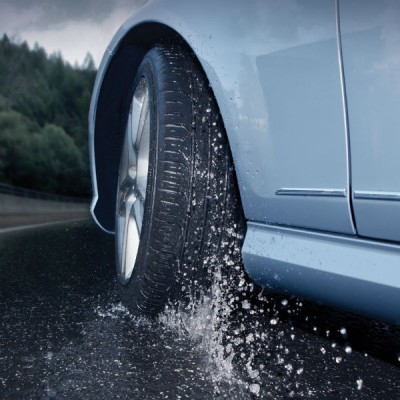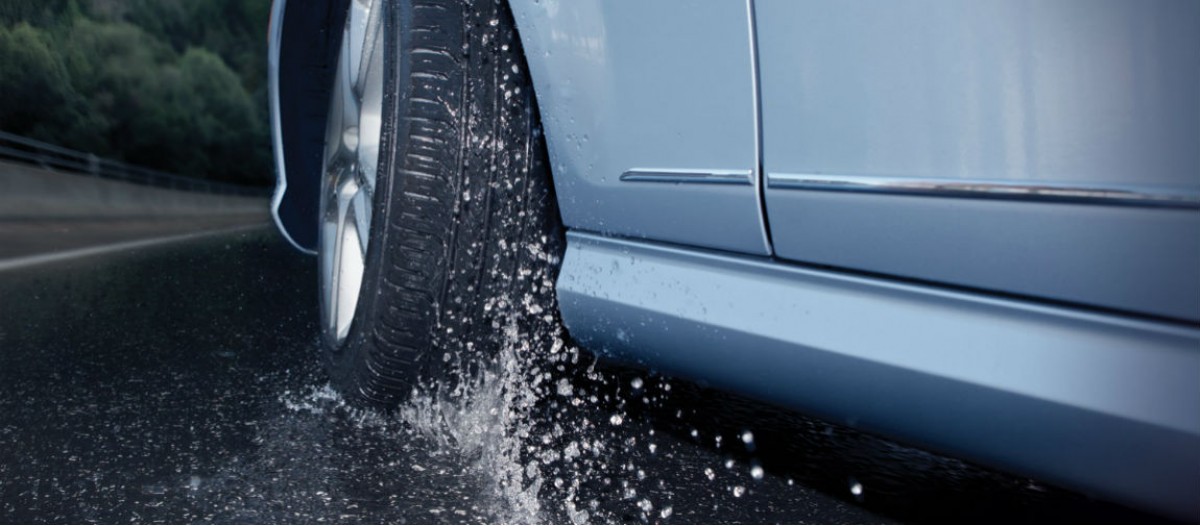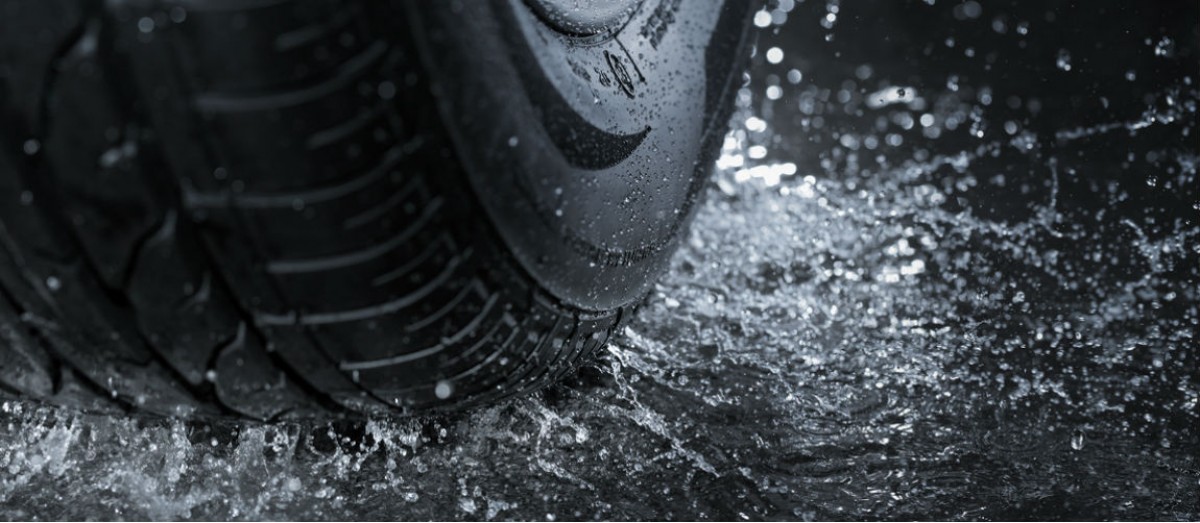BLOG
AVOID HYDROPLANING THROUGH TIRE & DRIVER EDUCATION

WHAT IS HYDROPLANING?
When driving through roads that are quickly taking on water, or
have standing water, a wedge of water can start building up at the leading edge
of a tire’s contact area (called the footprint), growing in depth and length
until the footprint loses contact with the road surface. Put simply,
hydroplaning is when a wedge of water lifts a tire from the road surface,
causing a loss of traction. If this happens to all four tires, a vehicle will
technically be skimming on the water, not the road, and a driver’s ability to
brake or steer is greatly inhibited until the footprint regains contact with
the road’s surface.
WHAT CONTRIBUTES TO HYDROPLANING
Hydroplaning is caused by a combination of speed, road conditions
and tire design and condition. Let’s take a deeper look at all of them:
- Water Depth/Road Conditions - As water depths on the road surface increase to more than 1/10th of an inch, the risk of hydroplaning grows exponentially. Both the intensity of the rainfall and type of road surface (for example, asphalt vs. unpaved) play a substantial role in creating hazardous conditions.
- Vehicle Speed - A tire’s tread needs time to evacuate water from under the footprint and the higher the speed, the less time is available for that to happen. Depending on the condition of the tires, their design and the amount of water on the road, hydroplaning can occur at speeds as low as 45 mph.
- Tread Design - All else being equal, a tire with a wider tread facing the direction of travel will hydroplane sooner than one which is narrower. The wider footprint has more surface area to form the wedge of water at its leading edge.
- Tread Depth - Of all the factors which contribute to hydroplaning (or to resisting it), the tire’s tread depth is among the most critical. Even high-quality tires will have little resistance to hydroplaning when worn to 2/32” or less, so it is vital that worn tires are replaced promptly for safe driving on wet roads.
- Vehicle Weight - If we compare two vehicles equipped with the same size and type of tire, the heavier vehicle will have an advantage in resisting hydroplaning because there's greater force to displace water from under the tire’s footprint.
TIRES DESIGNED TO HELP MINIMIZE HYDROPLANING?
Tire tread patterns vary greatly because tires are designed to
deliver driving performance that aligns with the priorities of the vehicle and
its owner. Examples include:
- Touring tires, which emphasize ride comfort, noise, and all season
traction, are designed with tread patterns that have additional grooves called
sipes to help provide a balance of wet and snow traction
- Performance tires, which focus on maximum control when cornering,
accelerating, and braking, tend to have less siping and stiffer tread patterns
to offer improved dry traction
Tire manufacturers must balance the design requirements of each
segment to ensure performance across different weather conditions. To provide resistance against hydroplaning,
tire engineers model multiple combinations of groove, sipe, and slot placement
to optimize water evacuation while providing a balance of other
performance. Touring tires often use open
shoulder slots to help channel water out of the tire’s footprint, while
performance tires may rely on wider main grooves to improve water evacuation.
Bridgestone engineers design tires that optimize the footprint to
distribute weight evenly across the tread to maximize contact with the road.
Each tread’s water channel is engineered to rapidly evacuate water from under
the footprint. These two features combine to help reduce the risk of
hydroplaning.
HOW CAN I PREVENT HYDROPLANING?
Slow down when weather and road conditions become hazardous. If
it’s safe to decrease your speed to 45 mph or less, do that. Yet, there are
still more steps you can take to keep yourself as safe as possible if you do
find yourself out braving rainy roadways.
Don’t rely on cruise control in inclement weather. You need to be
paying close attention to the road, and keeping manual control of your speed
can help.
When it rains, you should increase the distance between yourself
and other traffic. And be especially alert for any vehicles ahead of yours
driving irregularly; this could be a sign of areas of standing water.
If drivers ahead of you are creating tracks on the road, try to
keep your own tires aligned in them.
Visually inspect your tires at least once a month and make sure
that your tires aren’t worn out – that is, a tread depth of 2/32” or less. You
may have heard of the quick, easy way to check – just take a penny and place it
in one of the tire’s grooves with Lincoln’s head facing the base of the
groove. If the tread doesn’t cover any
part of his head, the tire is at or below 2/32” depth and must be replaced.
Rotate tires regularly.
WHAT SHOULD I DO IF MY VEHICLE IS HYDROPLANING?
First off, keep a clear head and try not to panic. Overreacting
will cause the situation to become worse.
Your first instinct may be to jam on the brakes. Don’t. Instead,
take your foot off the accelerator and allow your vehicle to slow down. If you
need to, and your vehicle has anti-lock brakes, you can lightly pump the brake
(tap the brake and release) to help your tires regain traction.
Hold the steering wheel steady and avoid making big steering
inputs. Large movements of the steering wheel while hydroplaning could result
in the car spinning out of control.
After you’ve regained control, avoid coming to a full stop on the roadway. If you need a few moments to regain your composure, be sure to pull safely onto the shoulder or off the road entirely, if possible. Remember, approaching vehicles may be experiencing the same difficulty with control that you did. While hydroplaning can be quite scary for drivers, always keep in mind that with some preparation and safety-first driving techniques, you are at far less of a risk of having it happen to you.
vs Oct 2021



Leave your comment